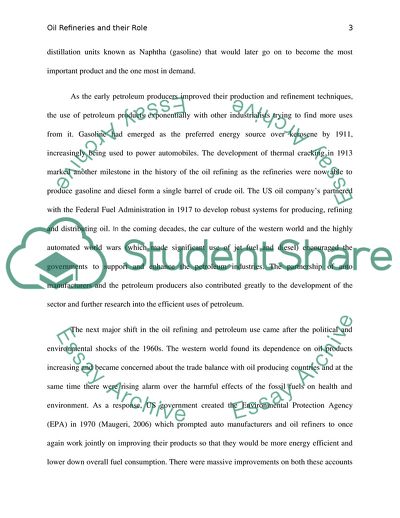Cite this document
(Oil Refineries and their Role in the Modern World Essay Example | Topics and Well Written Essays - 2500 words, n.d.)
Oil Refineries and their Role in the Modern World Essay Example | Topics and Well Written Essays - 2500 words. https://studentshare.org/engineering-and-construction/1837737-oil-refinery
Oil Refineries and their Role in the Modern World Essay Example | Topics and Well Written Essays - 2500 words. https://studentshare.org/engineering-and-construction/1837737-oil-refinery
(Oil Refineries and Their Role in the Modern World Essay Example | Topics and Well Written Essays - 2500 Words)
Oil Refineries and Their Role in the Modern World Essay Example | Topics and Well Written Essays - 2500 Words. https://studentshare.org/engineering-and-construction/1837737-oil-refinery.
Oil Refineries and Their Role in the Modern World Essay Example | Topics and Well Written Essays - 2500 Words. https://studentshare.org/engineering-and-construction/1837737-oil-refinery.
“Oil Refineries and Their Role in the Modern World Essay Example | Topics and Well Written Essays - 2500 Words”. https://studentshare.org/engineering-and-construction/1837737-oil-refinery.


